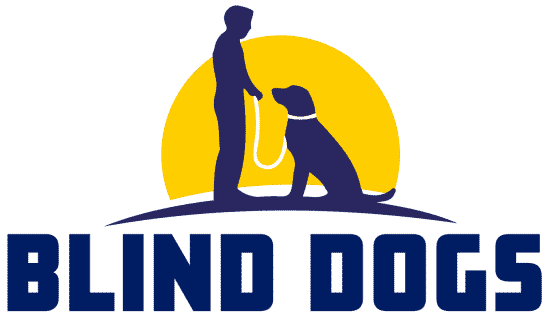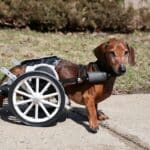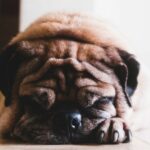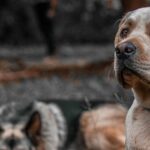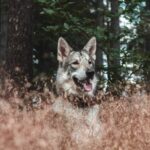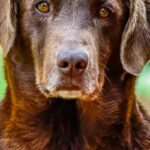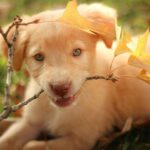With the right brush and proper brushing techniques, you can keep your short-haired dog’s coat looking healthy and shiny. Knowing what type of brush is best for your dog is key.
Bristle brushes are ideal for short-haired breeds, as they help to remove dirt and distribute natural oils. They come in a variety of styles, with features such as soft or hard bristles, size, shape and grip. By taking into consideration your pup’s specific needs, you can choose the best brush to keep their coat looking its best.
What is the Best Dog Brush for Short Hair?
Brushing your dog’s coat will help keep them looking great and feeling their best. When it comes to finding the best dog brush for short hair, look no further than a bristle brush.
Bristle brushes are great for removing loose hair and debris from the coat, as well as stimulating the skin and coat. They’re also a lot gentler on the skin than other brushes. When choosing a bristle brush for your pup, there are a few things you’ll want to consider.
Look for a brush with soft bristles.
Soft bristles will be gentler on the skin and will help prevent the coat from becoming damaged. Make sure the bristles are long and closely spaced.
This will help ensure that the brush can reach all parts of the coat and remove all of the loose hair. You’ll also want to look for a brush with a comfortable handle. A good handle will give you a better grip and make brushing easier.
Consider any additional features the brush may have.
Some brushes come with a comb attachment, which can be helpful for removing tangles. Others have a rubber grip for more comfortable handling. No matter which brush you choose, make sure it’s the right size for your pup.
A brush that’s too big won’t get all of the loose hair and one that’s too small won’t reach all of the coat. With the right brush, you and your pup will be ready for a great grooming session!
What Type of Brush is Best for Short Hair Dogs?
Bristle brushes are the best choice for short-haired dogs. There are several types of bristle brushes available, making it important to understand the key features of each type before making a purchase.
Soft bristles will help keep your pup’s coat soft, while hard bristles can help remove dead fur and keep your pup’s coat looking glossy and healthy. The size, shape, and grip of the brush can make a difference in the overall performance. When selecting a brush for your pup, you’ll want to look for one that has soft bristles.
Soft bristles are gentler on your pup’s skin and help keep their coat clean and healthy. Hard bristles are better for removing dead fur, which can help your pup’s coat look glossy and healthy.
You’ll want to pick a brush that has a comfortable grip, so you can brush with ease.
The size and shape of the brush can also make a difference in the brushing experience, so be sure to choose one that fits your pup’s body and hair type. Some brushes come with additional features, such as adjustable handles and removable combs. Adjustable handles can help make the brushing process more comfortable, while removable combs can help provide a deeper clean.
When shopping for a brush, be sure to consider all of these features and pick one that best suits your pup’s needs. With the right brush, you can keep your pup’s coat looking shiny and healthy.
Brushing Benefits for Short Hair Breeds
Brushing your short-haired dog is beneficial in many ways, and is a great way to maintain a healthy coat and skin. Regular brushing helps to remove matted and dead fur and dirt, stimulating the oil glands and helping to distribute natural oils throughout the coat. This helps to keep the coat looking shiny and healthy, and can help to reduce the amount of shedding.
Brushing can help to reduce the amount of fur your dog carries around the house, and can help to reduce the amount of dander in the air which can cause allergies. The type of brush you choose for your short-haired dog is important for achieving the best results.
A bristle brush is the best type of brush for short-haired breeds, as the bristles are strong enough to remove the matted fur and dirt, but soft enough to not damage the coat or irritate the skin.
Make sure to choose a brush that is the right size, shape and grip for your dog’s coat. Soft bristles are better for dogs with a fine coat, and hard bristles are better for dogs with a thick coat. When brushing your short-haired dog, be sure to use light, gentle strokes.
Working up from the skin and slowly running the brush through the fur.
Move in the direction of the fur’s natural growth and use a small amount of pressure. Taking care to avoid brushing too hard, as over-brushing can irritate the skin and cause dryness. It is important to make sure that your dog is comfortable, and always reward them with a treat after a successful brushing session.
Choosing the Right Bristle Brush for Your Dog
When choosing the right bristle brush for your short-haired dog, there are a few things to consider. Select a brush that has soft bristles, as this will provide a gentle massage for your pup’s skin and fur.
Harder bristles can cause skin irritation and damage the fur. You want to make sure the brush fits your hand comfortably, has a good grip and is the right size for your breed.
Certain brushes come with extra features, such as retractable pins, which can be helpful in removing mats and tangles. Make sure to assess the condition of your pup’s fur prior to brushing, especially if they have a more complicated coat.
If they have a lot of mats, consider a brush with retractable pins. This will help to loosen the mats without pulling on the fur or causing pain. If not, a regular bristle brush will be more than enough.
Look for a lightweight brush, as this will be more comfortable for you and your pup. Finding the right brush for your short-haired dog can make a big difference to your pet’s overall wellbeing.
Don’t be afraid to ask your vet or groomer for advice if you’re unsure which brush is best for your pup. With the right brush in hand, your pup’s coat will be shinier, smoother and healthier than ever before.
Soft vs Hard Bristles
When brushing your short-haired breed of dog, it’s important to choose the right type of brush. Soft bristles are usually the best choice, as they are gentle on the dog’s coat and skin, while still being effective in removing dirt and debris. Hard bristles, on the other hand, can be too harsh and cause discomfort or even injury.
Soft bristles are more likely to get into the hair follicles, allowing for a deeper clean.
For short-haired breeds, stick with soft bristles for your brushing sessions! Another advantage of using soft bristles is that they are less likely to cause breakage or damage to the coat. This is especially important for short-haired breeds, as their coats are typically finer and more delicate than longer-haired breeds.
Soft bristles can also help create a healthy shine, without stripping away natural oils from the hair. For the best brushing experience for your short-haired breed, always go for the soft-bristled brush!
Size, Shape and Grip
When selecting the right brush for your short haired pup, size, shape, and grip are all important factors to consider. Bristle brushes come in a variety of sizes and shapes, and some are designed with ergonomic handles to make it easier to hold and brush your pup.
For small breed dogs, a smaller brush is usually best, as the bristles will be better able to penetrate the coat and give a more thorough brush. For larger breeds, a larger brush is usually best.
Look for brushes with non-slip handles, as this can make brushing more comfortable and easier for you. Brush shape is also important.
Some brushes are designed to fit the contours of your pup’s body, making it easier to groom your pup’s back, sides, and legs. If your pup has a long or thick coat, look for a brush that has widely spaced bristles, as this will help to penetrate the coat and remove tangles. For a pup with a short coat, look for a brush with closely spaced bristles that are specifically designed for short haired breeds.
Consider the grip of the brush. An ergonomic handle is especially important if you plan on brushing your pup for longer periods of time.
If you have difficulty gripping, look for a brush with a handle that has a larger diameter, as this will make it easier to hold and brush your pup. With the right brush, you can make grooming your pup more comfortable and enjoyable for both of you.
Additional Features
When considering additional features for your dog brush, remember that comfort and ease of use are very important. Look for ergonomically designed handles with secure grips that will make brushing your dog easier on both of you. Brushes with adjustable straps or pivoting heads are even better since they work with your body and allow for a more natural and comfortable grip.
Check to see if the brush is self-cleaning.
Self-cleaning brushes are great because they help you keep your brush clean and free from dirt and debris. When it comes to short-haired dogs, a brush that is slightly softer is often best.
Bristles that are too hard can be uncomfortable for your dog, and uncomfortable brushes are not conducive to brushing. Consider the size of the brush. A smaller brush will be more nimble and better suited to shorter hair.
Look for a brush with enough flexibility to move through the coat easily without snagging or pulling. Make sure the handle is comfortable to hold and easy to maneuver around the dog’s body. With the right brush, brushing your short-haired dog will be a breeze.
- What Dog Breeds Have Pink Skin? - March 24, 2023
- What Are the Most Inspiring Dog Breeding Quotes? - March 20, 2023
- Can Pheromone Spray Help Improve Dog Breeding Results? - March 19, 2023
